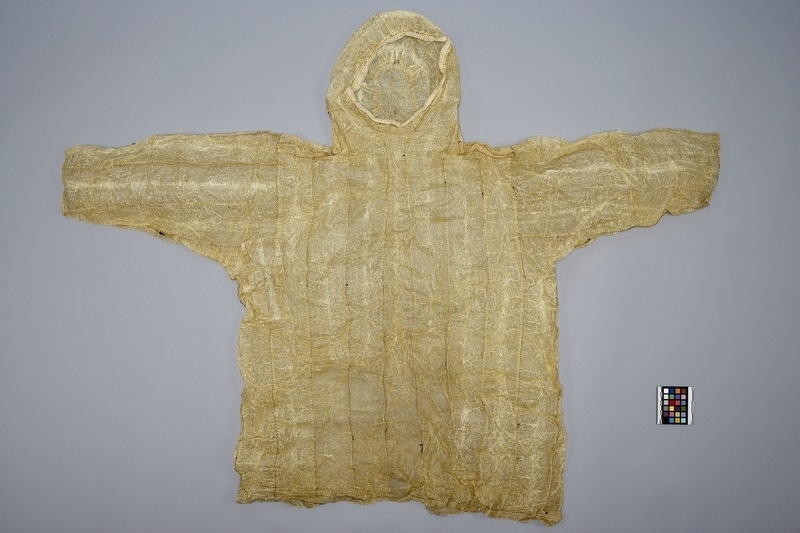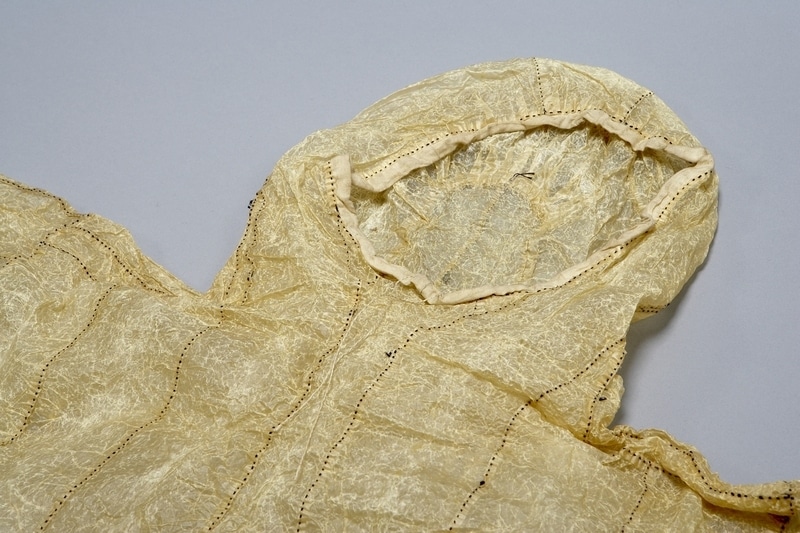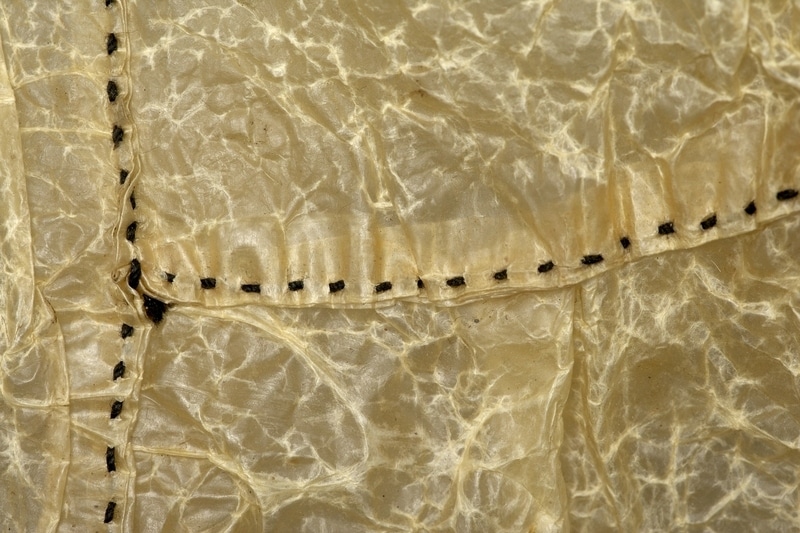Gut Skin Parka Item Number: A2.522 from the MOA: University of British Columbia




Description
Hooded coat (kalerak, or anorak) made of strips of scraped intestine. The body of the coat is made of vertical strips that extend into the hood. The arms are made of vertically sewn strips (vertical when arms are spread). The rim of the hood is lined with a cotton casing through which a thread is strung. The strips are sewn together with a dark blue cotton thread, thus accentuating the seams. A patch of intestine has been sewn onto the coat below the right arm. The bottom and the sleeves are trimmed with narrow strips of seal skin.
History Of Use
Coats of intestine were generally worn by men and women over their fur clothing as a protection in wet weather or at sea. Intestine clothing allows humidity to escape from the inside and is waterproof from the outside. The use of intestine clothing for ceremonial and spiritual purposes is well known in Alaska. Alaskan shamans wore intestine coats as ceremonial and spiritual garments during séances to cure illness or when performing miracles beneath the sea. Intestine coats provided an impenetrable layer against evil influences. Alaskan women wore intestine coats when making new sealskin kayak covers because the coat was believed to stop evil influences from entering or affecting the kayak. Men believed that intestine clothing prevented evil influences from entering the sea nets and from keeping away seals. The use of intestine clothing among the Canadian Inuit from MacKenzie Delta to Hudson Bay is rare.
Specific Techniques
Gutskin clothing was most commonly made of walrus intestines. Once the intestines were scraped clean, they were inflated and left to dry. Next, they were split, then scraped until translucent and malleable. The strips could then be sewn in vertical or horizontal bands, though horizontal was the more common. They were originally sewn together with sinew, and later with cotton thread using machines. The sewing technique for this coat is having two edges folded over and pressed together and sewn with a running stitch going through the four layers.
Item History
- Made in Gambell, St. Lawrence Island, Alaska, USA before 1956
- Owned by Francis H. Fay before July 9, 1956
- Received from Francis H. Fay (Donor) on July 9, 1956
What
- Name
- Gut Skin Parka
- Identification Number
- A2.522
- Type of Item
- parka
- Material
- bearded seal intestine, cotton fibre and ringed seal skin
- Manufacturing Technique
- cut, pieced and sewn
- Overall
- height 108.0 cm, width 146.0 cm
Who
- Culture
- Siberian Yupik
- Previous Owner
- Francis H. Fay
- Received from
- Francis H. Fay (Donor)
Where
- Holding Institution
- MOA: University of British Columbia
- Made in
- Gambell, St. Lawrence Island, Alaska, USA
When
- Creation Date
- before 1956
- Ownership Date
- before July 9, 1956
- Acquisition Date
- on July 9, 1956
Other
- Item Classes
- textiles
- Condition
- fair
- Accession Number
- 2219/0001